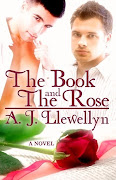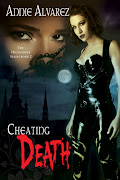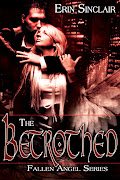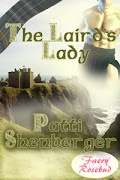Wednesday, December 23, 2009
Twenty-Five Interesting Christmas Facts
I apologize for being late. In case you didn’t realize, late should be my middle name. LOL!. There was gift wrapping, shopping, critiquing and writing, oh, my! And don’t even ask me what’s going on with the Christmas pie. I asked if the DH is I could bake and since he doesn’t want me around knives, it takes the fun out of the whole scenario. So as you can tell, I’m getting ready, or trying to, for Christmas.
While I have to agree Christmas can be very politically incorrect, I do find the holiday season the best time of year. During the rest of the year, all of us are bound by our own daily lives leaving us little time to pay attention to everything around us with the detail we seem to lavish upon the season. It is at this time we think of others: family, friends, underprivileged people, what’s happening in the rest of the world and kids.
But for me, I also love all the shows and the history that seems to abound. I am always finding something new out about the season. With that in mind, I have prepared this list of interesting facts.
1. An Ukrainian folk tale tells us about a woman who was so poor that she couldn’t afford decorations for her family. Being very sad, she went to bed that night to awake in the morning to find that spiders had trimmed her children’s tree with their shiny beautiful webs which shone silver and gold in the bright sun. So, if you’re ever in the Ukraine for Christmas, look for that spider web in the tree, it is believed to be the harbinger of good luck. Today, an artificial spider and web is often included in the decorations. This is more than likely the source of tinsel on the tree.
2. Mistletoe is a parasitic plant which grows on other trees. The custom of kissing under the mistletoe may come from ancient Scandinavia where mistletoe was associated with peace and friendship. If enemies happened to meet under a tree laden with mistletoe, they would be required to declare a truce for a day then seal it with the kiss of peace. Another theory is that it started in England with the Druids who believed mistletoe sacred and a charm against evil. It is said, they used golden sickles to harvest it and kept it from touching the ground. It was caught it in the folds of their priestly garments as it dropped from the trees above.
3. In India, they decorate banana trees at Christmas time.
4. According to tradition, giving a lump of coal in the stockings of naughty children comes from Italy.
5. Frumenty was a spiced porridge, enjoyed by both rich and poor. It was a forerunner of modern Christmas puddings. It is linked in legend to the Celtic god Dagda, who stirred a porridge made up of all the good things of the earth.
6. The poinsettia is a traditional Christmas flower. In Mexico (its original birthplace), the poinsettia is known as the "Flower of the Holy Night."
7. In Italy, the Urn of Fate is brought out on Christmas Eve. In it there is one wrapped gift for every family member. The first to try her luck is the matriach of the family, followed by the rest. If you get the present with your name on it, you get to keep it, otherwise you return the gift to the Urn and try again until you succeed.
8. Alabama was the first state in the USA to declare Christmas a legal holiday in 1836. Oklahoma was the last state to do so in 1907.
9. In England, during the years between 1649 and 1690, Oliver Cromwell banned Christmas Carols as well as other celebrations because he thought that Christmas should be a very solemn day. The only celebration allowed was by a sermon and a prayer service.
10. The actual gift givers are different in various countries:
England: Father Christmas
France: Pere Noel (Father Christmas)
Germany: Christkind (angelic messenger from Jesus), she is a beautiful fair-haired girl with a shining crown of candles.
Holland: St Nicholas.
Russia: In some parts - Babouschka (a grandmotherly figure), other parts it is Grandfather Frost.
Scandinavia: A variety of Christmas gnomes. One is called Julenisse.
Spain and South America: The Three Kings
Italy: La Befana (a kindly old witch)
11. December 26 was traditionally known as St. Stephen's Day, but is more commonly known as Boxing Day. This expression came about because money was collected in alms-boxes placed in churches during the festive season. This money was then distributed to the poor and needy after Christmas.
12. Some people connect modern traditions related to Father Christmas to ancient Celtic or pagan religion. Santa' elves are considered to be the modernization of the Nature folk while reindeers are believed to represent the Horned God, which was one of the Pagan deities.
13. In the Middle Ages, Boar's head used to be a traditional Christmas dish. This custom started when a bear attacked a university student and he saved himself by ramming a book of Aristotle's writings down its throat. The bear choked to death and then he cut off its head and brought it back to his college.
14. Handed down from Druids, burning Yule Log as a good luck charm was part of the ancient 12-day Christmas celebration.
15. During the years from 1887 to 1933, a fishing schooner called the 'Christmas Ship' used to sell spruce trees from Michigan to Chicagoans.
16. Mark Carr of New York started first Christmas tree retail lot in the United States, in 1851.
17. The Christmas tree was decorated for the first time in Riga, Latvia, in the year 1510.
18. The origin of celebrating on December 25 didn’t start with Christians, it actually started with the Romans as they celebrated the birth of Mithra, the god of the unconquerable sun. Also celebrated during the time of the winter solstice was Juvenalia, a feast to honor the children of Rome and Saturnalia to honor the god Saturn who was over all agricultural things. The birth of Jesus was not celebrated on this day until the fourth century when Pope Julius I chose this day to celebrate. It is thought that the Catholic church chose this day to absorb the pagan holidays into their own.
19. Until the turkey, a goose was the most popular fare served at a Christmas meal.
20. The popular Christmas carol Silent Night was written by an Austrian priest named Joseph Mohr in 1818 as a result of a broken church organ.
21. Santa has a calculated 31 hours to thanks to the different time zones and the rotation of the earth, assuming he travels east to west. US scientists calculated that Santa would have to visit 822 homes a second to deliver all the world's presents on Christmas Eve, travelling at 650 miles a second.
22. Poet Clark Moore is credited with naming Santa’s reindeer; Dasher, Dancer, Prancer, Vixen, Comet, Cupid, Donder and Blitzen.
23. The tradition of putting tangerines in stockings comes from 12th-century French nuns who left socks full of fruit, nuts and tangerines at the houses of the poor.
24. There is no reference to angels singing anywhere in the Bible.
25. Jingle Bells was the first song broadcast from space when Gemini 6 astronauts Tom Stafford and Wally Schirra sang it on December 16, 1965.
And my favorite, making the total actually twenty-six, the chances of a white Christmas are just 1 in 10 for England and Wales, and 1 in 6 for Scotland and Northern Ireland.
I’ve always pictured a home in the Highlands with snow around it at Christmas. Another hope dashed. Sigh.
No matter what you celebrate, be you Jewish, Christian, Native American, Islamic, Pagan, or any other religion of the world...enjoy the season...it only comes once a year. Family and friends are important no matter what you’re believe and that’s all you have to remember.
Have a great one! Next week, I’ll be posting the winner of my Christmas promotion here!
Lynn
Labels:
Boxing Day,
Christmas,
Druids,
holiday,
holidays,
mistletoe,
Pagan,
traditions,
tree
Subscribe to:
Post Comments (Atom)













4 comments:
wow i never knew any of that ty for sharing
I enjoyed reading these facts. When I read #19, I immediately thought of A Christmas Carol. Didn't Scrooge bring a Christmas goose to Bob Cratchit and his family?
Happy Holidays to All.
Thanks,
Tracey D
Thanks, SiNn! I thought it was interesting as well!
Lyn
I do believe you're right, Tracey.
I know I had to look a few of these up myself and fix a few errors since this was a cut and past operation this time!
Lynn
Post a Comment